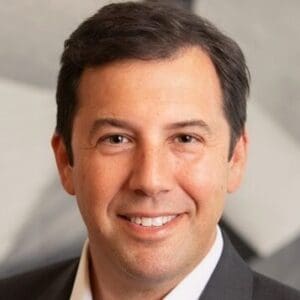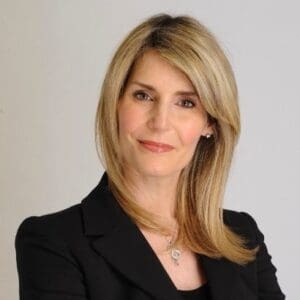Experts share their approaches to employee mental health and well-being and the impressive results they are experiencing.
By Debbie Bolla
The life-changing events of the last few years have put a spotlight on the overall well-being of employees and the role organizations play in driving a positive experience. At one time, only offering benefits for physical health was the status quo. Now, employers often support the mental health of their workforces. The research around the positive impact of employee wellness strategies is overwhelmingly supportive. Consider these recent statistics.
- All (100%) of HR leaders say wellness programs are important for employee satisfaction.
- When strong, effective well-being programs are put in place, employees become top performers, are not actively seeking a new job, and are paid equitably.
- The majority (90%) of HR leaders who measure the impact of their wellness initiatives said they see a positive return on investment.
- More than three-quarters (85%) of HR leaders said wellness programs decreased the cost of talent recruitment, retention, and/or engagement.
- More than three-fourths (78%) of HR executives reported their wellness program saved them money on healthcare expenses.
But there’s a big difference between offering a wellness program and having one that makes an impact. New research from Deloitte finds that less than two-thirds of employees report their physical and mental well-being are “excellent” or “good” (63% and 58%, respectively). So how can organizations approach and execute wellness programs successfully? Here, three HR leaders share their strategies to well-being with ideas to implement now and into 2024.
Our Experts
 Alex Kweskin
Alex Kweskin
EVP, CHRO
Banc of California
Mary Alice Vuicic
Chief People Officer
Thomson Reuters
 Thomas Kilgore
Thomas Kilgore
Senior Director of Diversity, Equity, and Inclusion (DEI) and Internal Communications
Radial
HRO Today: What offerings do you have in your wellness program?
Kweskin: At Banc of California, we are committed to the health and well-being of our team members. In 2022, we launched our “Wellness Together Program” that focuses on physical, emotional, and financial wellness. Each week, we bring in expert guest speakers to discuss various topics. We also host a “Summer of Wellness” series where we expand on expert dialogue with fun learning opportunities. For example, this summer we hosted an event at the beach with a California State park ranger to learn about the many physical and psychological benefits of being outdoors. Award-winning author Dr. Cara Natterson also shared her advice on how to help families navigate healthy social media behaviors. Beyond physical and emotional health, we also include financial wellness. Our financial advisor, Royce Bergman, senior retirement plan specialist from UBS Financial Services, is an employee favorite. Bergman shares tips on financial well-being, the economy, the impact of inflation, how to have hard conversations about finances, and of course how to get the most out of our 401K program.
Alison Myers, EVP of employee benefits for Venbrook Insurance Services, partners with Banc of California to build programs for our employees that create enthusiasm, connection, and a focus on health and well-being. Myers and her team have developed a series of webinars and activities that focus on ways to combat loneliness and fatigue and support emotional well-being. With remote work, emotional well-being is top of mind, including a newer conversation around building connection and positive communication skills in a hybrid work environment.
Kilgore: At Radial, we emphasize promoting the well-being and mental health of our employees through a comprehensive wellness program. Our program comprises various initiatives and resources tailored to support our employees in their professional and personal lives. Here are the key components of our wellness program.
“Radial Recharge Day:” Across the entire organization, each department has been granted one paid day where operations will pause for an eight-hour workday, allowing for a mental health and wellness break from work. During this time, employees are encouraged to spend the day relaxing or engaging in activities outside normal hours of operation that will essentially leave them feeling “recharged.”
“Mental Health and Wellness” employee resource group (ERG): Launched in September 2022, our “Mental Health & Wellness” ERG aims to unlock resources, reduce stress (both inside and outside the workplace), and create a safe space where employees can flourish. For example, the ERG consistently hosts virtual events that tackle important topics, like “Wellness for Busy People,” “How to Create Good Health through Humor,” and “Addressing Suicide Prevention.” These events provide employees with valuable resources and a safe space for discussions. In less than one year, we have been able to recruit and service more than 160 active members.
Aetna® employee assistance program (EAP): Our EAP is a free benefit service that offers confidential support at no cost to our employees, including all members of each household. Employees can receive 24/7 support when addressing anxiety, depression, addictions, and mental health conditions. In addition, approximately 24% of our frontline workers are Spanish speakers, and for this reason, our EAP offers bilingual services for these employees as well.
“Radial University:” Our virtual learning platform is available to all employees. In response to recent global tragedies, we have offered a self-paced online curriculum for employees as they learn how to navigate their own mental health journey. Recently launched courses include “How to Protect Mental Well-being Online;” “Mental Resilience for Remote Workers;” and “Destigmatizing Mental Health in the Workplace.” Overall, this is a great opportunity for employees to customize learning based on their own personal lived experience.
Vuicic: Thomson Reuters has taken a leadership role in leveraging new ways of prioritizing our people’s mental health and well-being. By signing on to the “Mindful Business Charter,” we joined a group of organizations committed to ensuring that mindful business practices are embedded into the workplace and creating an environment where everyone can speak openly and confidently about well-being. We launched a new mental health training and playbook for all people leaders on reducing stigma, empathetic leadership, creating psychological safety in the workplace, and signposting employees to support and resources.
We deliver monthly well-being campaigns on topics like gratitude, women’s health, and mindfulness. We continue mental health month-long campaigns centered around our annual “Mental Health Days” off in May and October, where we bring in keynote speakers and run internal initiatives tied to themes such as “Cultivating Courage” and “Renewing Energy.” We have also provided resources to employees, including “Brave Spaces” support groups for those impacted by life-changing events such as cancer, the Ukraine War, and Asian hate crimes. In addition, we equip employees with just-in-time resources like our EAP, Headspace meditation app, and on-demand learning resources on resilience and mental health.
Through our “Flex My Way” program, we’ve introduced a sabbatical option to give employees up to six months of personal time off. Our global caregiver and bereavement leave policies enable employees to step away from work. Our “Work from Anywhere” program gives employees the opportunity to work in a different location for up to eight weeks per year, with up to four of those weeks in another country. Over time, we believe that programs like these contribute to employee well-being and engagement which foster improved productivity and innovation.
HRO Today: What results have you seen and how do you measure ROI?
Kilgore: From our first kick-off event, our ERG membership increased by 138%. Additionally, we are proud to announce that in the past six months, our total membership has increased by 281% since its launch in September 2022. During July 2023, we hosted over 200 employees for our virtual monthly event, where we explored how to achieve wellness for busy working professionals. As an organization, one of our social ambition goals is to ensure that we maintain a 78% retention rate by 2025. By ensuring that our employees are afforded adequate mental health and wellness benefits, we are confident that we will achieve this number.
Vuicic: We measure employee well-being through our “Employee Listening Surveys,” which are a key metric that feeds into our organizational health index survey, which benchmarks the company against 2,500 other organizations around the world. This approach allows us to gain a comprehensive understanding of the company’s overall health and identify areas for improvement. By utilizing this data-driven approach, we are able to make the appropriate adjustments and implement initiatives that effectively enhance the employee experience at Thomson Reuters. We have seen a positive increase in our overall sentiment as it relates to well-being and supportive management.
Kweskin: We recognize there is a commitment on behalf of the bank to invest time and resources into our wellness programs, but it pays huge dividends for our team members. A healthy team is a happy and productive team. At Banc of California, we believe in the spirit of “Together We Win,” and it is embedded in the work we do for our clients, our community, and in supporting each other. “Wellness Together” is about learning how to be healthy in work and life. One area that continuously receives the highest engagement numbers is our Terryberry/Walker Tracker team challenges. During these challenges, teams come together and compete for 45 days to see which team achieved the most steps or physical activity. The winning team receives our three-foot tall trophy, which has been passed around the office, and is highlighted on our LinkedIn page. Plus, they get bragging rights! It’s a fun, easy-to-use app on smartphones that everyone can be a part of and improve their own wellness. The teams at Banc of California are competitive and we have a lot of fun seeing who’s winning at any given time.
HRO Today: What role does wellness play in your company’s employee experience?
Vuicic: Mental health and well-being continues to be a central pillar of the employee experience. At Thomson Reuters, our greatest strength and source of competitive advantage is the intellectual capital of our people, which is inextricably linked to their well-being. We continue to seek feedback from our team on how we can support their mental health through awareness, support, open and safe conversations, and changing how we work and lead so that they can thrive.
Kilgore: Wellness is a cornerstone of our company’s commitment to providing exceptional employee experience. We believe that a healthy and happy workforce is not only engaged but also more productive. One example of our dedication to wellness is the “Mental Health Awareness Challenge” launched by our ERG during Mental Health Awareness Month. During this month-long challenge, employees across our organization accumulated over 3,580 hours of “rest and relaxation.” This showed us that our employees understand and value the importance of well-being. They engaged in various activities such as exercise, meditation, journaling, and reading, highlighting their commitment to self-care. Wellness is not just important; it’s at the core of our company’s culture and employee experience.
Kweskin: Building a work-life balance is critical to the success of our organization. By offering a wide range of wellness opportunities that encourage mental, emotional, physical, and financial wellness, we create team members who are more focused, more productive, and happier.















